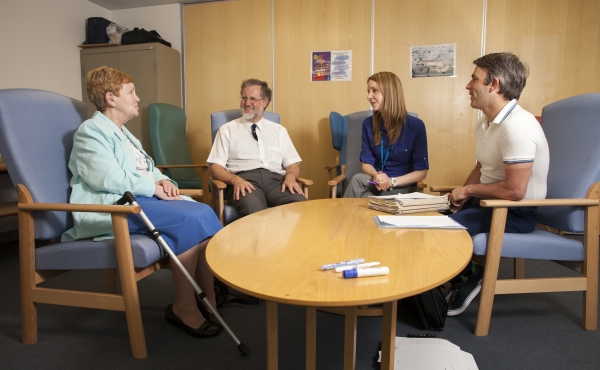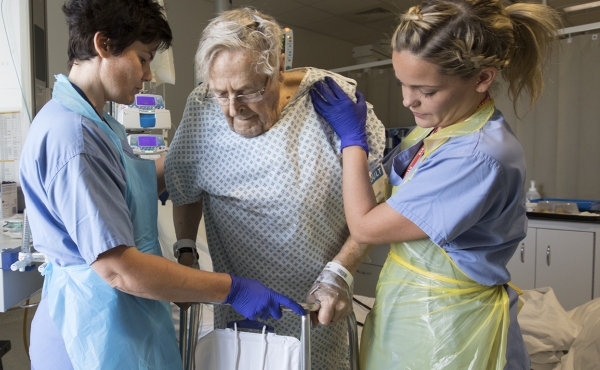Day Surgery
Day Surgery: National Day Surgery Delivery Pack
Find out why and how day surgery is the answer to the waiting list crisis since the COVID-19 pandemic in version 2 (updated 2024) of the Day Surgery Delivery Pack
Getting it Right First Time (GIRFT), the Centre for Perioperative Care (CPOC) and British Association of Day Surgery (BADS), have together developed the National Day Surgery Delivery Pack, which contains key principles for increasing and improving day surgery rates across the NHS. In light of changes in the healthcare landscape, version 2 of the guideline has been published in September 2024.
We recognise that not all principles are immediately realisable, but reconfiguration or redevelopment of future hospital services require that serious consideration is given to them. Information within this pack should be used to guide the development of day surgery services in order to enable us to give all patients across the UK the opportunities and clinical outcomes which high quality day surgery pathways confer. Day surgery needs to be accepted as the major contributor to the future of surgical services. There is still wide variation in day surgery rates throughout the UK. In the lowest quartile of NHS Trusts, twice as many eligible patients are admitted as inpatients as in the highest quartile, which must be addressed.
Day surgery should be the default setting for more than just the 200 procedures identified by BADS. This would not only improve patient care and satisfaction, but would also be highly cost-effective, improve efficiency, improve staff retention and morale and reduce the demand for inpatient beds. This expansion can only be achieved safely by following clear guidelines and creating good pathways aimed at improving quality.
Section 1: Background to day case surgery in the UK
Addressing common misconceptions and making the case for expanding and increasing day case surgery, especially at a time when the NHS needs to re-start and catch up with demand for elective surgery following the Covid-19 pandemic; identifying variation in day case rates and addressing the areas of greatest opportunity identified by GIRFT.
Section 2: The generic day case pathway
The key components that can be applied to existing inpatient activity to convert to a day case approach, including essential information about the best practice management required for the delivery of a high-quality day surgery service and action check lists for each stage of the pathway.
Section 3: Procedure specific best practice pathways and templates
A list of day case surgery procedures to be used as ‘default’ day surgery pathways together with links to simple trust level process pathways and template documents for everyday use. In addition, procedures that may be undertaken as an outpatient rather than day surgery are listed because there is a national drive to move procedures down the “intensity gradient” from inpatient to day case settings and from day case theatres to outpatient clinics, where appropriate.
- Surgical teams should embrace the BADS Directory of Procedures and develop day surgery pathways and protocols for all appropriate procedures
- Default patients undergoing procedures within the BADS Directory to a day case pathway
- Ensure all potential day surgery patients are listed and coded with a day surgery management intent
- Ensure preoperative assessment protocols for patient selection are inclusive rather than exclusive of day surgery
- Progress towards the development of dedicated day surgery units
- Progress towards the provision of dedicated day surgery teams
- Establish a multidisciplinary day surgery management team
- Ensure all day surgery patients are admitted to a dedicated admissions area
- Embrace use of day case operating trolleys over hospital beds
- Establish protocols for anaesthesia, perioperative analgesia and take-home medication
- Ensure that day surgery is a consultant or experienced SAS delivered service, with clear training pathways for the future workforce
- Equip day surgery facilities with high quality equipment
- Ensure day surgery patients are discharged through a dedicated day surgery ward staffed by nurses with expertise in day surgery nurse led discharge
- Ensure the day surgery discharge ward has no capacity to accept inpatient activity and support this with a commitment from managerial teams to protect this policy even at times of escalation
- Ensure patients are telephoned the day after surgery for clinical support and patient outcome data collection
- Audit day surgery outcomes and benchmark performance against the BADS Directory of Procedures, the BADS Directory of Procedures National Dataset and the Model Hospital
- Ensure appropriate coding of procedures to capture accurate activity in benchmarking data (such as Model Hospital and the BADS Directory of Procedures National Dataset)
Perioperative care is all phases from contemplation of surgery through to life postoperative. It requires excellent pathways and teamwork. With on-going pandemic restrictions, expanding day surgery safely is key to restoring surgery.
Find out more on our shared decision making resources



